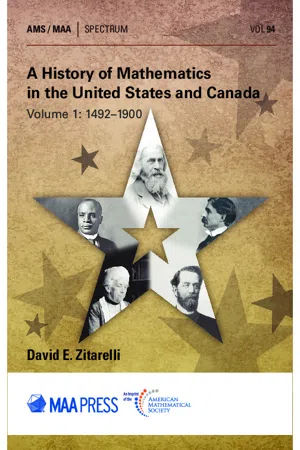
A History of Mathematics in the United States and Canada
Volume 1: 1492–1900
- English
- PDF
- Available on iOS & Android
About This Book
This is the first truly comprehensive and thorough history of the development of mathematics and a mathematical community in the United States and Canada. This first volume of the multi-volume work takes the reader from the European encounters with North America in the fifteenth century up to the emergence of a research community the United States in the last quarter of the nineteenth.In the story of the colonial period, particular emphasis is given to several prominent colonial figures—Jefferson, Franklin, and Rittenhouse—and four important early colleges—Harvard, Québec, William & Mary, and Yale. During the first three-quarters of the nineteenth century, mathematics in North America was largely the occupation of scattered individual pioneers: Bowditch, Farrar, Adrain, B. Peirce. This period is given a fuller treatment here than previously in the literature, including the creation of the first PhD programs and attempts to form organizations and found journals.With the founding of Johns Hopkins in 1876 the American mathematical research community was finally, and firmly, founded. The programs at Hopkins, Chicago, and Clark are detailed as are the influence of major European mathematicians including especially Klein, Hilbert, and Sylvester. Klein's visit to the US and his Evanston Colloquium are extensively detailed. The founding of the American Mathematical Society is thoroughly discussed.David Zitarelli was emeritus Professor of Mathematics at Temple University. A decorated and acclaimed teacher, scholar, and expositor, he was one of the world's leading experts on the development of American mathematics. Author or co-author of over a dozen books, this was his magnum opus—sure to become the leading reference on the topic and essential reading, not just for historians. In clear and compelling prose Zitarelli spins a tale accessible to experts, generalists, and anyone interested in the history of science in North America.
Frequently asked questions
Information
Table of contents
- Cover
- Title page
- Copyright
- Contents
- Foreword from the Editor
- Preface
- Acknowledgments
- Permissions and credits
- Introduction to Volume I
- Part I Colonial Era and Period of Confederation, 1492–1800
- Part II New Republic,1800–1876
- Part III Research Community,1876–1900
- Endnotes
- Bibliography
- Index